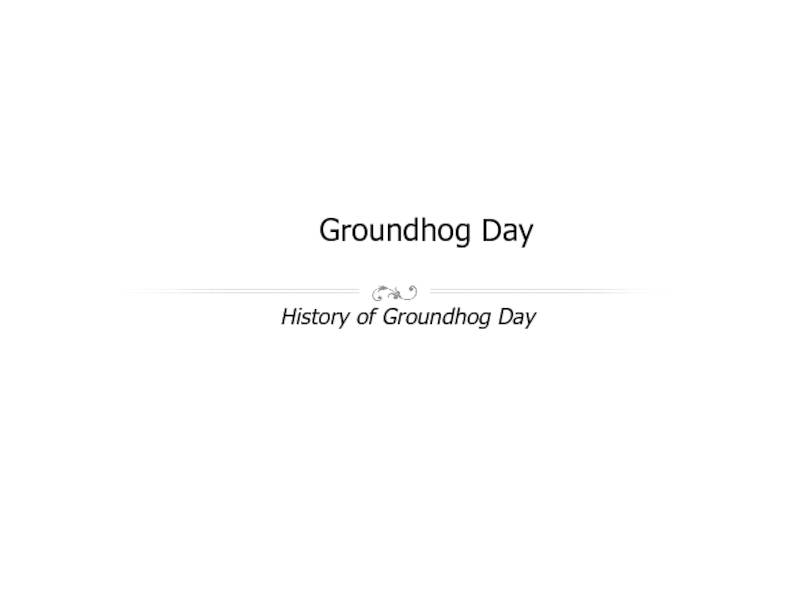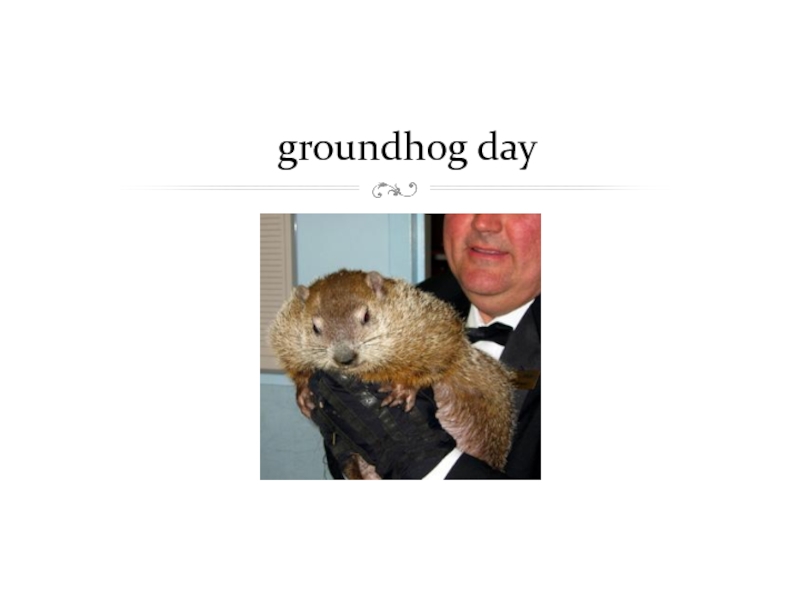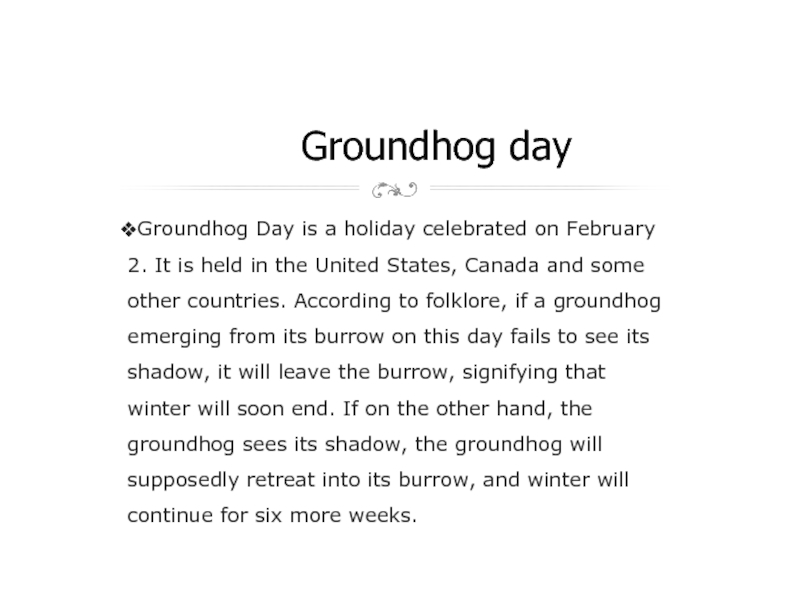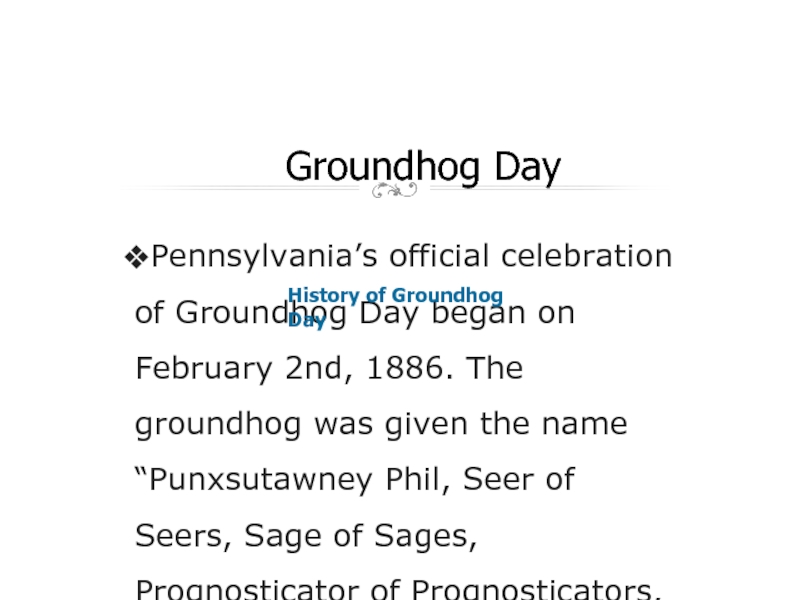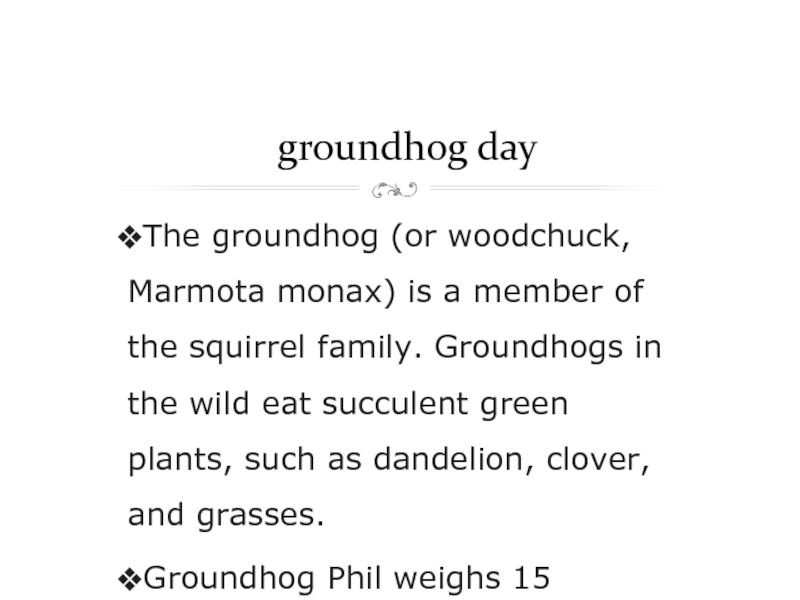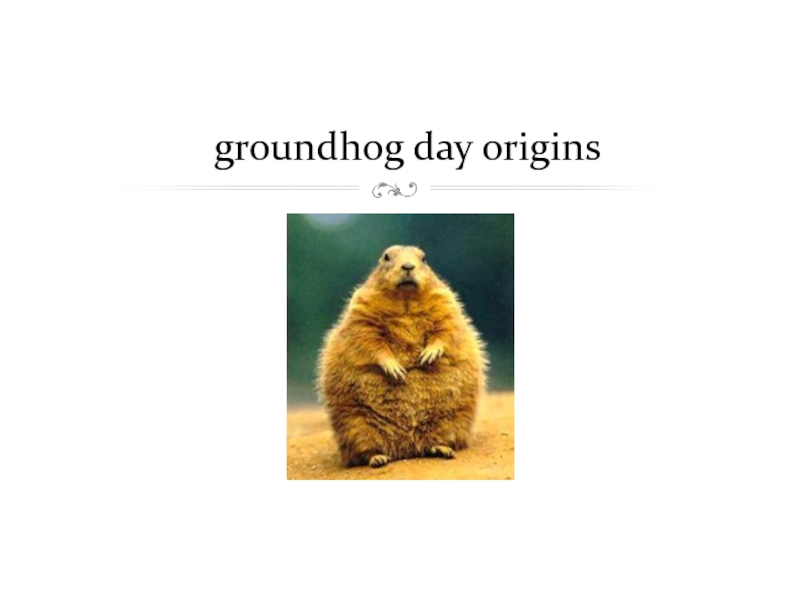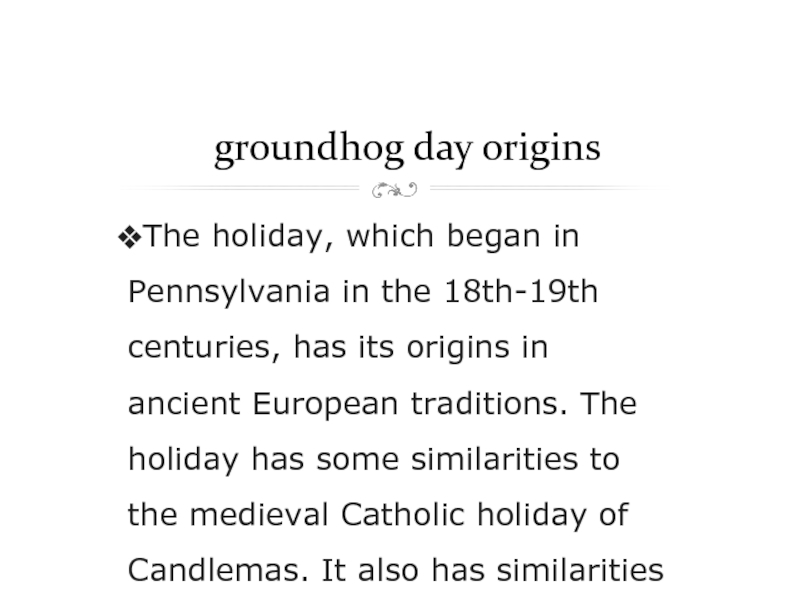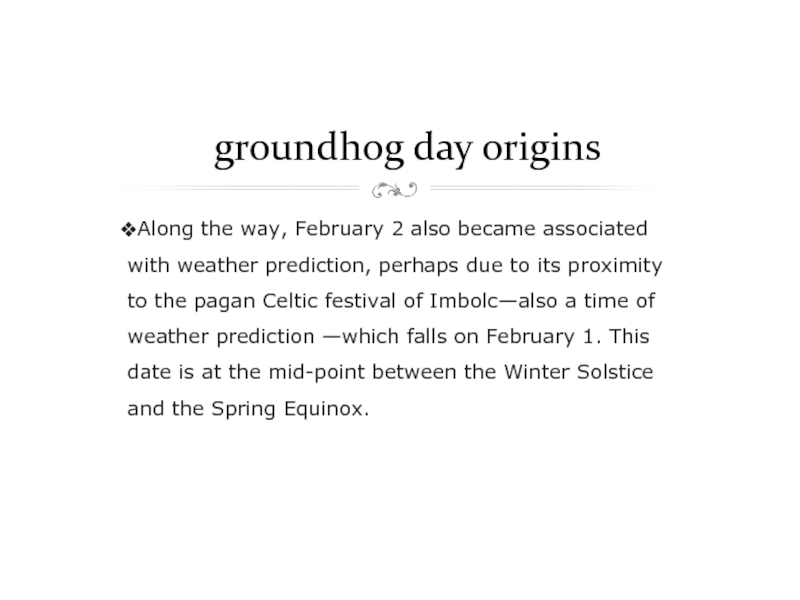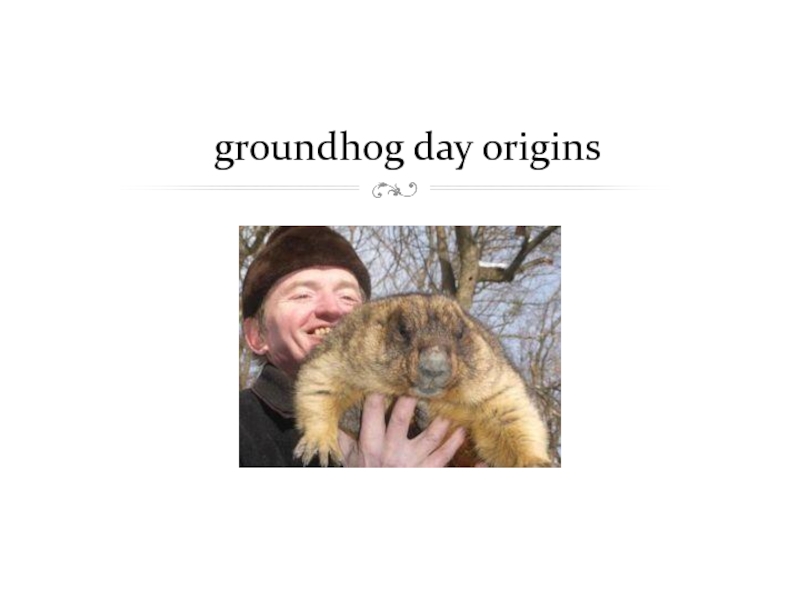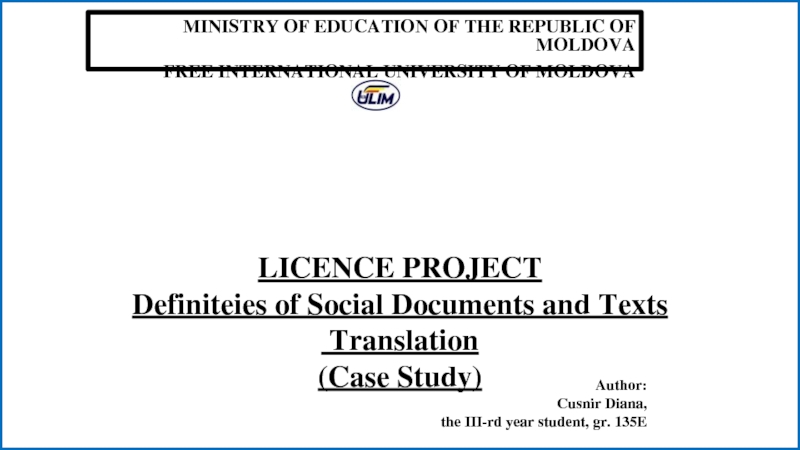- Главная
- Разное
- Дизайн
- Бизнес и предпринимательство
- Аналитика
- Образование
- Развлечения
- Красота и здоровье
- Финансы
- Государство
- Путешествия
- Спорт
- Недвижимость
- Армия
- Графика
- Культурология
- Еда и кулинария
- Лингвистика
- Английский язык
- Астрономия
- Алгебра
- Биология
- География
- Детские презентации
- Информатика
- История
- Литература
- Маркетинг
- Математика
- Медицина
- Менеджмент
- Музыка
- МХК
- Немецкий язык
- ОБЖ
- Обществознание
- Окружающий мир
- Педагогика
- Русский язык
- Технология
- Физика
- Философия
- Химия
- Шаблоны, картинки для презентаций
- Экология
- Экономика
- Юриспруденция
Groundhog Day презентация
Содержание
- 1. Groundhog Day
- 2. groundhog day
- 3. Groundhog day Groundhog Day is a holiday
- 4. Groundhog Day Pennsylvania’s official celebration
- 5. groundhog day The groundhog (or woodchuck, Marmota
- 6. groundhog day origins
- 7. groundhog day origins The holiday, which began
- 8. groundhog day origins Along the way, February
- 9. groundhog day origins Superstition held that if
- 10. groundhog day origins
Слайд 3Groundhog day
Groundhog Day is a holiday celebrated on February 2. It
is held in the United States, Canada and some other countries. According to folklore, if a groundhog emerging from its burrow on this day fails to see its shadow, it will leave the burrow, signifying that winter will soon end. If on the other hand, the groundhog sees its shadow, the groundhog will supposedly retreat into its burrow, and winter will continue for six more weeks.
Слайд 4
Groundhog Day
Pennsylvania’s official celebration of Groundhog Day began on February 2nd,
1886. The groundhog was given the name “Punxsutawney Phil, Seer of Seers, Sage of Sages, Prognosticator of Prognosticators, and Weather Prophet Extraordinary” and his hometown thus called the “Weather Capital of the World.” His debut performance: no shadow — early Spring.
Groundhog Day received worldwide attention as a result of the 1993 film of the same name, Groundhog Day, which was set in Punxsutawney and featured Punxsutawney Phil. Since 1993 attendance at the real event has expanded. In 1997, there were 35,000 visitors in Punxsutawney.
Groundhog Day received worldwide attention as a result of the 1993 film of the same name, Groundhog Day, which was set in Punxsutawney and featured Punxsutawney Phil. Since 1993 attendance at the real event has expanded. In 1997, there were 35,000 visitors in Punxsutawney.
History of Groundhog Day
Слайд 5groundhog day
The groundhog (or woodchuck, Marmota monax) is a member of
the squirrel family. Groundhogs in the wild eat succulent green plants, such as dandelion, clover, and grasses.
Groundhog Phil weighs 15 pounds and lives in his home at the Punxsutawney Library.
The largest Groundhog Day celebration is held in Punxsutawney, Pennsylvania, where crowds as high as 40,000 have gathered to celebrate the holiday since at least 1886.
Groundhog Phil weighs 15 pounds and lives in his home at the Punxsutawney Library.
The largest Groundhog Day celebration is held in Punxsutawney, Pennsylvania, where crowds as high as 40,000 have gathered to celebrate the holiday since at least 1886.
Слайд 7groundhog day origins
The holiday, which began in Pennsylvania in the 18th-19th
centuries, has its origins in ancient European traditions. The holiday has some similarities to the medieval Catholic holiday of Candlemas. It also has similarities to the Pagan festival of Imbolc, the seasonal turning point of the Celtic calendar, which is celebrated on February 1 and also involves weather prognostication.
In the early days of Christianity in Europe, clergy would distribute blessed candles to the faithful on February 2 in honor of Candlemas, a holiday celebrating the Virgin Mary’s presentation of Jesus at the Temple in Jerusalem 40 days after his birth. A lighted candle was placed in windows of the home. Tradition held that the weather on Candlemas was important: clear skies meant an extended winter.
In the early days of Christianity in Europe, clergy would distribute blessed candles to the faithful on February 2 in honor of Candlemas, a holiday celebrating the Virgin Mary’s presentation of Jesus at the Temple in Jerusalem 40 days after his birth. A lighted candle was placed in windows of the home. Tradition held that the weather on Candlemas was important: clear skies meant an extended winter.
Слайд 8groundhog day origins
Along the way, February 2 also became associated with
weather prediction, perhaps due to its proximity to the pagan Celtic festival of Imbolc—also a time of weather prediction —which falls on February 1. This date is at the mid-point between the Winter Solstice and the Spring Equinox.
Слайд 9groundhog day origins
Superstition held that if the sun came out February
2, halfway between Winter and Spring, it meant six more weeks of wintry weather. If the sun made an appearance on February 2, an animal would cast a shadow, thus predicting six more weeks of Winter. Germans watched a badger for the shadow.
